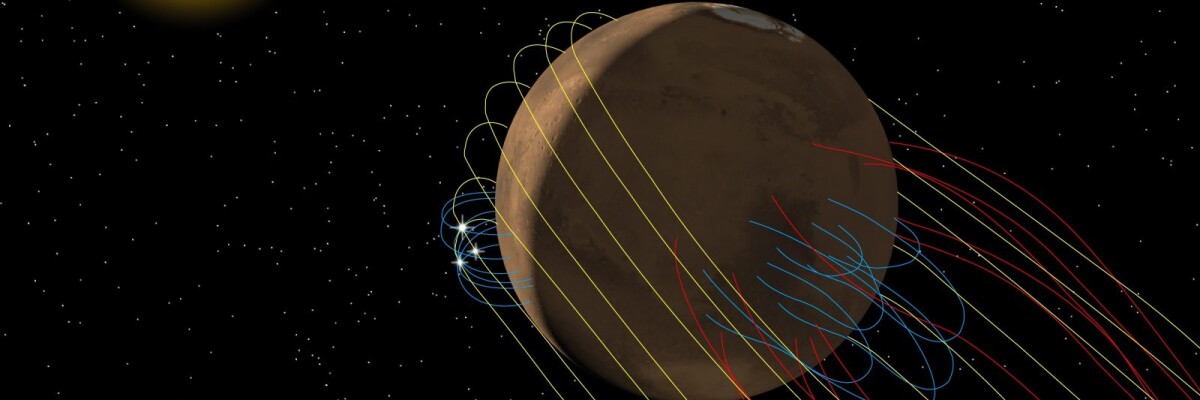Scientists from NASA announced a new discovery. Using the artificial satellite MAVEN (Mars Atmosphere and Volatile Evolution Mission) it was found that Mars has a unique "magnetic tail". Today there is no...
Scientists from NASA announced a new discovery. Using the artificial satellite MAVEN (Mars Atmosphere and Volatile Evolution Mission) it was found that Mars has a unique "magnetic tail".
Today there is no such universal magnetic field on the red planet as there is on Earth. For millions of years the planet lost it under the influence of the solar wind and gradually got colder and colder. Using data from MAVEN, scientists have found that a tail formed out of the remnants of the magnetic field and deviates by 45 degrees from the position that was theoretically predicted.
Researchers say that the reason for the unusual shape is because of the effect of magnetic reconnection, which occurs when the solar wind is affected by the remnants of the magnetic field.
Ionized particles that make up the solar wind flow at a high speed - more than 1000 km/sec - and capture part of the solar magnetic field with them. The magnetic fields of the Sun and the planet merge from different directions. This is called the reconnecting effect.
The Martian atmosphere was also gradually depleted. The scattering of its material is probably also caused by reconnection. Ions in the upper layers of the atmosphere change direction and move along the changed magnetic lines, partially flying into space.
The problem of the depletion of the Martian magnetic field, and as a result the atmosphere, has long been of concern to scientists. In particular, this is one of the problems that casts doubt on the possibility of the colonization of Mars in the near future.
Jim Green, who heads NASA's study of the planet, even suggested creating an artificial magnetic shield for the planet. For now, it is only a conceptual idea to create a special apparatus at the Lagrange point between Mars and the Sun which will create an additional magnetic field. The Lagrange point is at a distance, about 320 radii of the planet, from Mars. At this point the device will not experience any impact from the Sun or Mars, except gravitational forces.
The simulations showed that if the planet is protected from the effects of the solar wind, significant changes will occur in a few years. Atmospheric pressure can reach half the Earth's surface, the temperature will increase by several degrees, and the ice from carbon dioxide and water will melt.
Mars is the most promising planet for colonization, but most scientists are still skeptical of Jim Green's idea.
Share this with your friends!






Be the first to comment
Please log in to comment